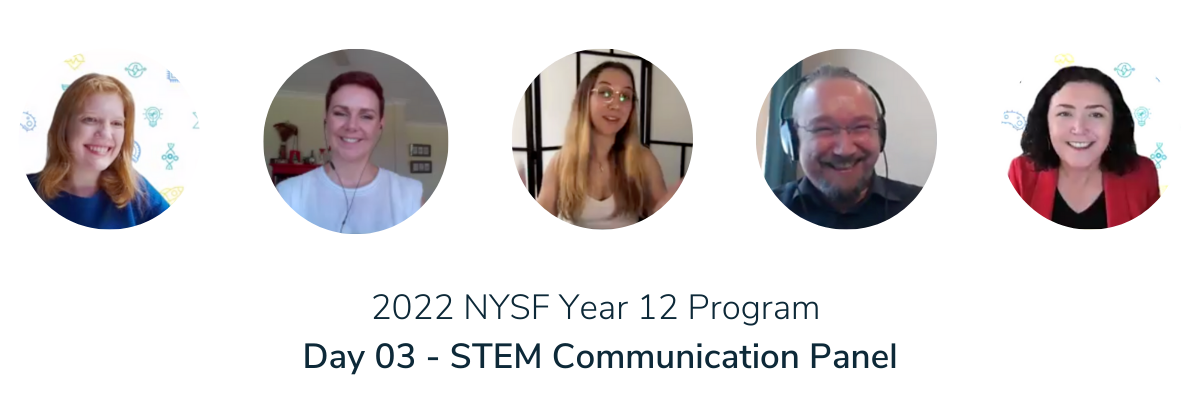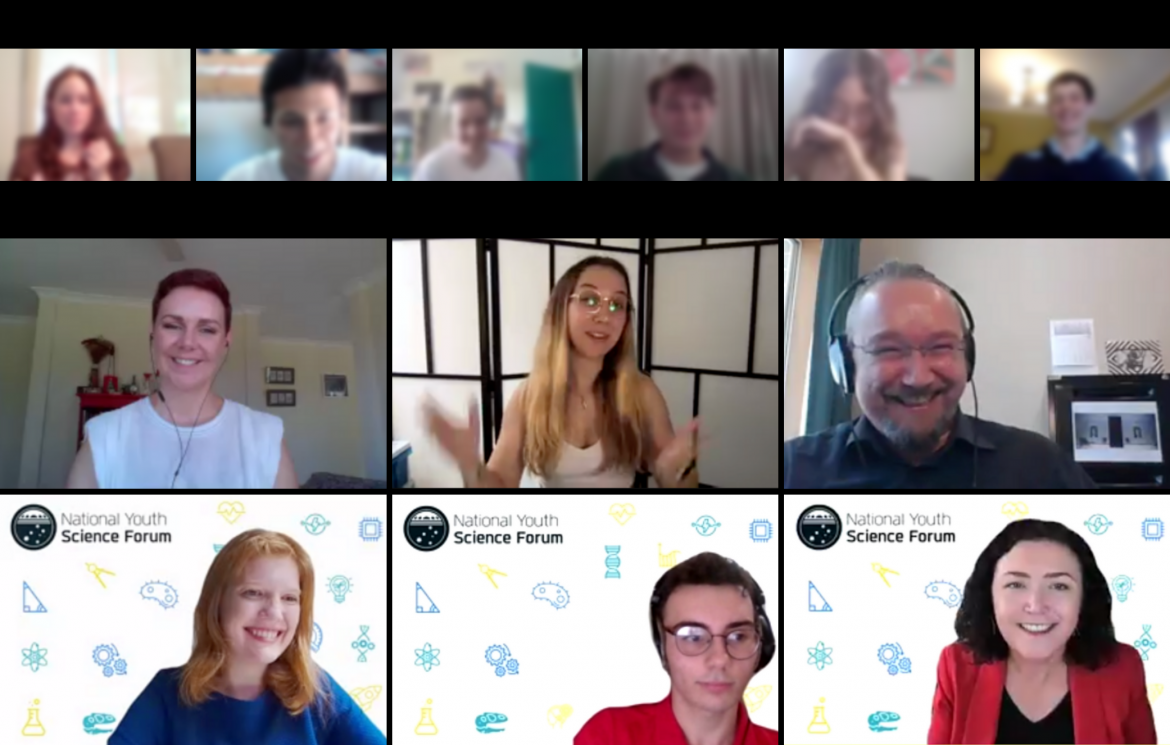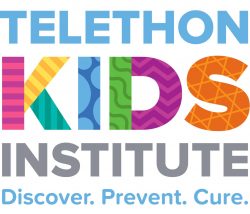
Learn how to be a storyteller, know your audience, and just go out and do it!
This is just a teaser of advice provided by our all-star panel in the 2022 NYSF Year 12 Program STEM Communication Workshop.
NYSF participants were joined by Tegan Taylor, visionary ABC radio host behind the hit pandemic podcast, Coronacast, Dr Joe Milton, evolutionary biologist and senior media officer at the Australian Science Media Centre (AusSMC), and Kirsten Banks (@AstroKirsten), astrophysicist and social media STEM communicator extraordinaire!
The session, hosted by Dr Catherine Wheller, led participants through intricate discussions on what it means to be a STEM communicator, why communication is important, and some of the ways our participants can launch (or yeet according to Kirsten) their STEM communication careers!

Reflecting back on his journey to his current position at the Australian Science Media Centre, Dr Milton mentioned that he had to upskill in communications strategy once he left research to become a science journalist. An essential aspect of communicating STEM is knowing that different audiences have varying levels of scientific literacy and that there are strategies to communicate STEM topics at different levels of complexity.
"If I had to pick one fundamental, most important principle of science communication it's this: think about who the audience is and make sure that you're tailoring what you're trying to say so that it's going to work for that audience and it's going to be engaging for them."
Tegan Taylor echoed Dr Milton’s advice saying that humans have always engaged with stories.
"Humans have always loved stories - it doesn't matter what the platform is. Whether you're sitting around a fire or whether you're making a video that's going out on one of any number of social media platforms or [platforms] that we haven't even heard of yet!"
Kirsten Banks said the same theory applies in the social media realm, and it’s crucial to be entertaining and relatable if you want to engage with your audience. On her experience communicating science outside of her expertise, particularly during her conversation with NSW Chief Health Officer Dr Kerry Chant, Kirsten ensures that the content she produces is something to which she herself wants to know the answer.
“I prepare questions that are scientific enough that I'm happy asking them myself, but also such that the answers would benefit those listening in as well as myself...It was great to have that opportunity to...help ask those questions that others may not have thought of, or those answers that haven't been distilled during the daily press conferences, and in a way that people can understand."
The panel also answered questions from the participants, and discussed how a background in STEM can put you a step ahead of the competition. Tegan Taylor mentioned that "most journalists aren't particularly sciencey and often that translation can get a little bungled and so then you can end up with at best a bit of a misunderstanding and at worst you can end up with misinformation...Finding that happy medium between what the general public is likely to be able to understand, or build on existing understanding without sacrificing accuracy, is so important."
NYSFer Lily, asked the question, "How do you go about communicating content that you don't agree with or that you're not interested in?"
For context creators like, Kirsten Banks, you "have full reign to do whatever content you want" and that if you "do create your own content...you're your own editor". If she's not excited by a topic, she's like "meh, I'll do a different video!"
Tegan Taylor wants her passion to shine through her work.
"I think that with science and STEM as a whole, if you're not interested it means I haven't done my job well enough of explaining it to you because I think that the way that the universe works or the way we interact with each other and how our body's work is inherently fascinating! Then it's about figuring out how to drill down into that to make it understandable and to find out the why or the who cares of whatever that story is and anchor it to that and then take it from there."
The panel also mentioned how sensationalising science, or having too much of it thrown at you, can overwhelm the audience. The panel recommended, that as STEM communicators, NYSFers "take that role seriously and to inform yourself as best you can and bring people along for the journey."
The instinct to debunk misinformation is strong, but Dr Milton explains that it may not always be the best port of call.
"A wonderful thing about social media - it gives scientists that right to reply when they see something that's completely wrong....but we do know that if somebody is, let's say a climate skeptic or a vaccine skeptic, the way to convince them is not to fire more and more facts and information at them. In fact, that tends to have the opposite effect and it actually leads to [them] becoming more entrenched in their original position."
Tegan Taylor agreed, saying one solution is to provide a "truth sandwich".
"Think about a 'truth sandwich' so that the thing that people remember when they come away isn't the misinformation it's the true thing. You go 'this is the fact some people have said and then you go through this is why it's wrong and then reiterate at the end so we know that [true fact here] and you repeat the truth at the end. [This can] be a way of making sure that people... are only going to remember one thing, and it's the true thing not the fake thing."
The overwhelming message from our panel was that of encouragement and support. There are many pathways into STEM communication. You may want to do STEM communication professionally, or you may want to become a better communicator of your own work.
What engages you? What interests you? If you’re interested in blogging, start a blog! If you enjoy listening to podcasts, start one yourself! Build up a portfolio of your own content, even if you don't share it with the world just yet.
While the future of STEM communication will inevitably change (will we be communicating via VR in the Metaverse?), the heart of communication will remain the same - storytelling! So get writing, get vlogging, get talking, and become storytellers!
The NYSF would like to extend an enormous thank you to our expert panel, Tegan Taylor, Dr Joe Milton, and Kirsten Banks.
The 2022 NYSF Year 12 Program STEM Communication Workshop was proudly supported by the WA Department of Jobs, Tourism, Science and Innovation and Telethon Kids Institute.

